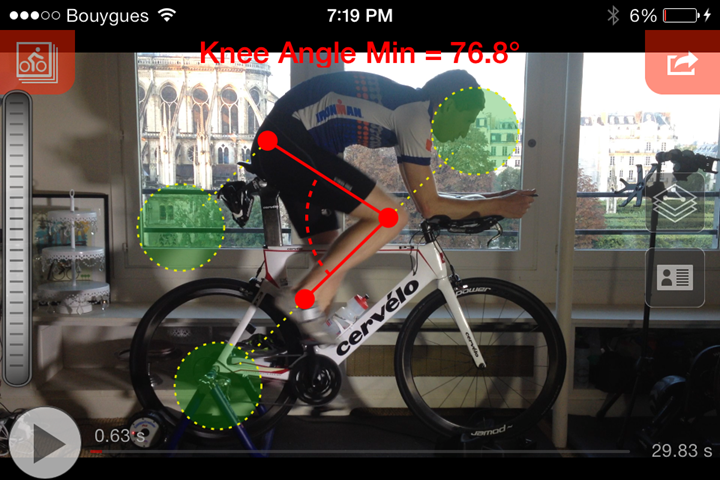DIY bike fit using ImageJ?
capt_slog
Posts: 3,974
I was reading a thread the other day from a poster asking for advice on his riding position.
It was that which caused me to remember this app that you could put into an iPhone to analyse your riding position...
http://www.dcrainmaker.com/2013/10/auto ... eview.html
If you haven't seen it before and can't be bothered to read the link, you position your iPhone or similar about 3m away from your roller/turbo and take a bit of film of you riding the bike. The app then analyses your fit on the bike. Simples.
The article goes on to talk about perhaps attaching position markers to yourself to help with getting some of the angles right, in particular the knee angle which is being looked at in this photo...

..and I suddenly realised that I'd seen something like this before in a scientific measuring program called 'ImageJ'.
ImageJ is free to download, and after a bit of initial familiarisation, it's not bad to use. Its format looks a bit old fashioned and DOS-like but it does work, and you can analyse photos and I think even video frames.
Below is a screen shot where I've used ImageJ to look at a random photo of some TOB riders.

I know the angle isn't at any meaningful point in the circle, and also that the bone points might be wrong, it's just for illustration of the idea.
It was that which caused me to remember this app that you could put into an iPhone to analyse your riding position...
http://www.dcrainmaker.com/2013/10/auto ... eview.html
If you haven't seen it before and can't be bothered to read the link, you position your iPhone or similar about 3m away from your roller/turbo and take a bit of film of you riding the bike. The app then analyses your fit on the bike. Simples.
The article goes on to talk about perhaps attaching position markers to yourself to help with getting some of the angles right, in particular the knee angle which is being looked at in this photo...

..and I suddenly realised that I'd seen something like this before in a scientific measuring program called 'ImageJ'.
ImageJ is free to download, and after a bit of initial familiarisation, it's not bad to use. Its format looks a bit old fashioned and DOS-like but it does work, and you can analyse photos and I think even video frames.
Below is a screen shot where I've used ImageJ to look at a random photo of some TOB riders.

I know the angle isn't at any meaningful point in the circle, and also that the bone points might be wrong, it's just for illustration of the idea.
The older I get, the better I was.
0

